 During World War II, a group of young women, mostly high school graduates, joined the Manhattan Project at the Y-12 National Security Complex located at Oak Ridge, Tennessee. Known as the Calutron Girls, the group worked for the project from 1943 to 1945. The women were taught to monitor dials and watch meters for calutrons, which are mass spectrometers adapted for separation of uranium isotopes for the development of nuclear weapons for use during World War II. While the women worked at their jobs, and learned how to read the instruments they were required to monitor, they were not allowed to know the purpose of these things.
During World War II, a group of young women, mostly high school graduates, joined the Manhattan Project at the Y-12 National Security Complex located at Oak Ridge, Tennessee. Known as the Calutron Girls, the group worked for the project from 1943 to 1945. The women were taught to monitor dials and watch meters for calutrons, which are mass spectrometers adapted for separation of uranium isotopes for the development of nuclear weapons for use during World War II. While the women worked at their jobs, and learned how to read the instruments they were required to monitor, they were not allowed to know the purpose of these things.
They were actually monitoring the manufacturing of enriched uranium that was to be used to make the “Little Boy” atomic bomb for the Hiroshima nuclear bombing to be carried out on August 6, 1945. The Manhattan Project, which was established to develop nuclear weapons, required uranium-235 (U235), the fissionable isotope of uranium. The vast majority of uranium that is mined from the ground is uranium-238. Only about while only 0.7% is U235. The scientists in charge of the project developed several processes for separating the isotopes of uranium, including electromagnetic separation and gaseous diffusion.
“The Y-12 factory was built in Oak Ridge, Tennessee, to house 1,152 calutrons, a machine used for isotope separation. The word “calutron” is a portmanteau of California University Cyclotron. Calutrons, a variation on mass spectrometers, work by combining uranium with chlorine to make uranium tetrachloride, which is then ionized and put in a vacuum chamber with a magnetic field. When the charged particles move through the magnetic field, they move in a curve, the radius of which is proportional to the mass of the particles. The two isotopes differ in mass by about 1% and can thus be separated.”
The process of separating the U235 Uranium out of the oar was relatively simple, but it still required people to constantly monitor the calutrons. Unfortunately, during World War II, many of the men were fighting. That left a shortage of labor. There simply weren’t enough scientists to operate all of the calutrons. So, the government recruited farm girls to operate the calutrons instead. The main reason for using the young women, was that they were readily available, accustomed to hard work. A stipulation of their employment was that they were not to ask excessive questions, and they had to be loyal and docile. I’m sure these women thought they were doing something top secret and all, but I don’t think they had any idea of the gravity of this project. Lives were on the line, and lives would be lost. Still, they didn’t know that, so I suppose their superiors assumed it would let them sleep at night. I suppose it did. These women honestly didn’t know what they were a part of…some until years later. They would never forget what they did, and they would always wonder if it was right or wrong.
The Tennessee Eastman Company, which ran the Y-12 site, recruited around 10,000 local women between 1943 and 1945. They hired train operators with only a high school education, and they used a large local advertising campaign to recruit workers. One ad read, “When you’re a grandmother you’ll brag about working at Tennessee Eastman.” Word of mouth brought in several other workers. Of course, in hard times, a big motivator was the money being paid. Plus, these women were patriots, and this work was for the war effort. They were trained for three weeks, and they went to work.
The Tennessee Eastman Company was loyal to the cause. They put a billboard on the premises reading “What you see here / what you do here / what you hear here / when you leave here / let it stay here,” with three wise monkeys to demonstrate “see no evil, hear no evil, speak no evil.” Another billboard at the Oak Ridge location,  encouraged secrecy among workers. These companies demanded secrecy and confidentiality…if these women wanted to keep their jobs. According to Gladys Owens, who was one of the Calutron Girls, a manager at the facility once told them, “We can train you how to do what is needed, but cannot tell you what you are doing. I can only tell you that if our enemies beat us to it, God have mercy on us!” Of course, that was correct, but these women would have to live with what they did, once they knew what it was. Testimonies said women who talked about what they were doing disappeared. One young woman who “disappeared” was said to have “died from drinking some poison moonshine.” If they were too nosy about what they were working on, they were replaced. Cars going in and out were searched, and letters were opened and read. This was vital and this was no joke. Anything but secrecy would not be tolerated.
encouraged secrecy among workers. These companies demanded secrecy and confidentiality…if these women wanted to keep their jobs. According to Gladys Owens, who was one of the Calutron Girls, a manager at the facility once told them, “We can train you how to do what is needed, but cannot tell you what you are doing. I can only tell you that if our enemies beat us to it, God have mercy on us!” Of course, that was correct, but these women would have to live with what they did, once they knew what it was. Testimonies said women who talked about what they were doing disappeared. One young woman who “disappeared” was said to have “died from drinking some poison moonshine.” If they were too nosy about what they were working on, they were replaced. Cars going in and out were searched, and letters were opened and read. This was vital and this was no joke. Anything but secrecy would not be tolerated.
The work these women did was not what would be considered labor intensive by any means. The women sat on high stools for 8-hour shifts, seven days per week, “monitoring gauges and adjusting knobs to keep the needles where they were supposed to be and recording readings.” The knobs the women were adjusting were simply labeled with cryptic letters. The women did not know what the letters stood for. What they were taught was that “if you got your M voltage up and your G voltage up, then Product would hit the birdcage in the E box at the top of the unit and if that happened, you’d get the Q and R you wanted.” Okay…whatever that meant. All they knew was that they had to make sure the machine remained at the correct temperature. That was vital and if it got too hot, they used liquid nitrogen to cool it down. If the needles reached a point where they could not control them, they had to call someone else to come help…immediately!!!
Former Calutron Girl Wynona Arrington Butner said, “We all wore little fountain-pen-sized dosimeters. Part of signing out of the plant was to check the amount of radiation that you had absorbed every day.” Civilian workers paid $2.50 per month (single) or $5.00 per month (family) for medical insurance. I don’t know if they understood what radiation could do to them or not, but if they did, they would know that the wages paid and even the insurance help, was probably not enough.
Some Calutron Girls had more of a sense of what they were working on than others. Butner, who had some training in chemistry, said she and others with a similar background had some sense of what they were doing. They knew they were producing “the Product,” and they guessed it was somewhere near the bottom of the periodic table. Willie Baker, on the other hand, said, “Even when somebody let it slip that we were building a bomb, I didn’t know what they meant. I was just a country girl. I had no understanding of what an atomic bomb was.” Later, I’m sure the gravity of the work she did, weighed heavily on Baker.
Over two years, the calutrons at Y-12 had produced about 140 pounds of U235. This was enough to make the first atomic bomb. By December 1945, enough uranium for a second Little Boy was available. Then, it all hit these women, because on August 6, 1945, when the US dropped the first bomb, “Little Boy,” on Hiroshima, Japan, the Calutron Girls were finally told what they had been working on. I can’t imagine how they must have felt. When they heard the news, some women were working, while others were in their dorm rooms. Someone came and told them that an atomic bomb had been dropped on Japan, and everyone there had played a part in making it. Yes, it was the enemy, and death happens in war. Nevertheless, the Calutron Girls had mixed feelings about their part in the bomb. Ruth Huddleston said she was “really happy at the time, because her boyfriend was stationed in Germany, and this would bring him back.” Still, it bothered her that she had a part in killing so many people, but she accepted that “if the bomb hadn’t been dropped, then probably more people would have been killed. …But even today, if I think too much about it, it bothers me.” Butner had a similar experience, because at the time, she was happy that the war was over and people she knew in the service could come  home, but over time, she began to question whether it was the right thing to do. I think many people over the years have questioned it, but good, bad, or ugly, World War II was over.
home, but over time, she began to question whether it was the right thing to do. I think many people over the years have questioned it, but good, bad, or ugly, World War II was over.
Most of the Calutron Girls are gone now, but those who remain, such as Huddleston, regularly shared their stories with the public, often alongside Oak Ridge historian Ray Smith. The women are the subject of the nonfiction book “The Girls of Atomic City” by Denise Kiernan and the novel “The Atomic City Girls” by Janet Beard. I’m sure that many of these women suffered nightmares over the work they did, but did not know they were doing. While I know they suffered much anxiety over that, I hope they also know that we are so grateful for their service to this great nation.

 My nephew, Chris Killinger joined our family when he married my niece, Lacey (Stevens) Killinger a little under a year ago. Chris and Lacey are such a beautiful couple, and their wedding was just lovely. Since then, they have just been enjoying married life, and spending time with the kids, Brooklyn and Jaxon, who also joined our family with Chris married Lacey. They have all been a wonderful addition to our family.
My nephew, Chris Killinger joined our family when he married my niece, Lacey (Stevens) Killinger a little under a year ago. Chris and Lacey are such a beautiful couple, and their wedding was just lovely. Since then, they have just been enjoying married life, and spending time with the kids, Brooklyn and Jaxon, who also joined our family with Chris married Lacey. They have all been a wonderful addition to our family.
Chris and Lacey didn’t take a honeymoon right away, but later went to Mexico, and they had a super fun time. Chris and Lacey both have very demanding jobs, and they were ready for some down time. One of the highlights of the trip was when they went swimming in caves down there. The cave walls were beautiful, and it was a very different experience for them. The trip was one they won’t forget.
Chris is the office and purchasing manager for Atlas Aero Service, which is located at the Casper-Natrona  County International Airport. Chris’ job allows him to see all the planes that come and go from the airport. There is a huge variety of planes…military planes, cargo planes, commercial liners, and private jets (often with celebrities). Recently, however, the celebrity wasn’t the person on the plane…it was the plane. Chris knows planes, and he likes planes. He has a real interest in military planes. The plane that they got to work on recently was a plane that had been used in the movie “Tora, Tora, Tora” back in the 1970s. The movie was about the attack on Pearl Harbor in 1941, and while I know that Chris though it was very cool to work on that plane, I can’t help but think about how interested my dad, Al Spencer, Lacey’s grandpa would have loved to see that plane. He was the flight engineer and top turret gunner on a B-17 during World War II, so that plane would have been so cool for him to see. I’m glad Chris got that chance…such a cool experience, and one he will never forget for sure.
County International Airport. Chris’ job allows him to see all the planes that come and go from the airport. There is a huge variety of planes…military planes, cargo planes, commercial liners, and private jets (often with celebrities). Recently, however, the celebrity wasn’t the person on the plane…it was the plane. Chris knows planes, and he likes planes. He has a real interest in military planes. The plane that they got to work on recently was a plane that had been used in the movie “Tora, Tora, Tora” back in the 1970s. The movie was about the attack on Pearl Harbor in 1941, and while I know that Chris though it was very cool to work on that plane, I can’t help but think about how interested my dad, Al Spencer, Lacey’s grandpa would have loved to see that plane. He was the flight engineer and top turret gunner on a B-17 during World War II, so that plane would have been so cool for him to see. I’m glad Chris got that chance…such a cool experience, and one he will never forget for sure.
Recently, Chris and Lacey bought a new camper, and they have been having a great time with it. Chris has had 
 to learn how to pull it, which isn’t easy, but he is getting the hang of it. They have been having a great time going camping and they love their new camper. Lacey’s family takes yearly trips to Pathfinder Reservoir for a whole family week of fun, swimming, games, and lounging. Having a nice camper with room for their whole family is very important. The camper will get lots of use. Today is Chris’ birthday. Happy birthday Chris!! Have a great day!! We love you!!
to learn how to pull it, which isn’t easy, but he is getting the hang of it. They have been having a great time going camping and they love their new camper. Lacey’s family takes yearly trips to Pathfinder Reservoir for a whole family week of fun, swimming, games, and lounging. Having a nice camper with room for their whole family is very important. The camper will get lots of use. Today is Chris’ birthday. Happy birthday Chris!! Have a great day!! We love you!!

 My nephew, Shannon Moore married my niece, Lindsay (Hadlock) Moore, on Valentine’s Day of 2014. This year marked their tenth anniversary, and every day has been a great blessing to Lindsay. Lindsay tells me that “Shannon is an amazing husband and dad!! God made him for this role. He is so patient, so kind, and so loving!!” I agree. Anyone who has seen these two together, will attest to that fact. Life has not always been easy for Shannon and Lindsay, but together, they have worked their way through it, supporting each other all the way. Their love is beautiful.
My nephew, Shannon Moore married my niece, Lindsay (Hadlock) Moore, on Valentine’s Day of 2014. This year marked their tenth anniversary, and every day has been a great blessing to Lindsay. Lindsay tells me that “Shannon is an amazing husband and dad!! God made him for this role. He is so patient, so kind, and so loving!!” I agree. Anyone who has seen these two together, will attest to that fact. Life has not always been easy for Shannon and Lindsay, but together, they have worked their way through it, supporting each other all the way. Their love is beautiful.
Lindsay can’t say enough good things about her husband. She tells me, “Shannon has been growing spiritually…and a lot over the last year. I’ve loved watching him grow and lead our family.” Having a husband that encourages the family to attend church is so important. The reality is that there are moments every day, when we need to draw closer to God, and learn to lean on Him. There is gladness, for which we can rejoice in Him; and sadness, in which we can draw our strength from Him…but only if we know Him. Shannon knows his God, and that has been a great source of strength and leading for him.
 Shannon is such a fun-loving guy, and very adventurous. Among his favorite things is planning adventures for his family. This year, they went to Houston and Galveston. They also made a trip across South Dakota and Minnesota. They went camping in Casper, and in the Snowy Mountains, and Saratoga!! Lindsay tells me, “He loves to take care of us and show us something fun.” I can certainly see that in Shannon. They got on hikes to some of the most beautiful places, and their daughter, Mackenzie, their pride and joy, is so blessed to be introduced to these fun activities.
Shannon is such a fun-loving guy, and very adventurous. Among his favorite things is planning adventures for his family. This year, they went to Houston and Galveston. They also made a trip across South Dakota and Minnesota. They went camping in Casper, and in the Snowy Mountains, and Saratoga!! Lindsay tells me, “He loves to take care of us and show us something fun.” I can certainly see that in Shannon. They got on hikes to some of the most beautiful places, and their daughter, Mackenzie, their pride and joy, is so blessed to be introduced to these fun activities.
Shannon is the assistant coach for the Wyoming Cowboys football team. He is also their tight ends coach and helps with special teams too. Not only does Shannon’s family benefit from the kind of loving person Shannon is, but his players do too. Shannon and Lindsay are always doing special gatherings with the guys, many of whom 
 are far from home. Shannon and Lindsay really aren’t old enough, to be parental figures for the guys, but they definitely serve in the role of mentors, and the guys really appreciate that about them.
are far from home. Shannon and Lindsay really aren’t old enough, to be parental figures for the guys, but they definitely serve in the role of mentors, and the guys really appreciate that about them.
Shannon is well known for his servant’s heart. He serves his family, his friends and colleagues, and church with a glad and generous heart. That is one of Lindsay’s favorite things about him. Shannon has loved Lindsay since he first laid eyes on her, and his love for her grows deeper and deeper with each passing day. Shannon has a huge capacity for love, and his family is very blessed to have him. Today is Shannon’s birthday. Happy birthday Shannon!! Have a great day!! We love you!!
 It never really occurred to me that the formation of new states in the United States would be the huge undertaking that it actually became. I just assumed that as the settlers moved into an area, they eventually got populated enough to decide to be a state. Of course, I realized that they would have to “petition” the national government for acceptance, but that wasn’t all there was to it at all. The United States had acquired the Northwest Territory (the Midwest today) in a number of steps. First, when it was relinquished by the British. Second, extinguishment of states’ claims west of the Appalachians. And finally, usurpation or purchase of lands from the Native Americans. Originally, the Hudson’s Bay Company acquired the area under a charter from Charles II in 1670. Then, in 1869, the Canadian government bought the land from the company. The boundaries we now have were set in 1912. In 1870, Canada acquired an area known as Rupert’s Land and the North-Western Territory from the Hudson’s Bay Company for £300,000 (Canadian $1.5 million) and a large land grant.
It never really occurred to me that the formation of new states in the United States would be the huge undertaking that it actually became. I just assumed that as the settlers moved into an area, they eventually got populated enough to decide to be a state. Of course, I realized that they would have to “petition” the national government for acceptance, but that wasn’t all there was to it at all. The United States had acquired the Northwest Territory (the Midwest today) in a number of steps. First, when it was relinquished by the British. Second, extinguishment of states’ claims west of the Appalachians. And finally, usurpation or purchase of lands from the Native Americans. Originally, the Hudson’s Bay Company acquired the area under a charter from Charles II in 1670. Then, in 1869, the Canadian government bought the land from the company. The boundaries we now have were set in 1912. In 1870, Canada acquired an area known as Rupert’s Land and the North-Western Territory from the Hudson’s Bay Company for £300,000 (Canadian $1.5 million) and a large land grant.
That left the United States with a kind of dilemma, since they wanted to make sure these new states were run in the way they had originally designed. So, on July 13, 1787, Congress enacts the Northwest Ordinance, to structure the settlement of the Northwest Territory. Since the formation of new states was a new venture for  the young nation, they had to create a policy for the addition of these new states. Vitally important was the need to make sure their new nation thrived and survived. The members of Congress knew that if their new confederation were to survive intact, it had to resolve issue of the states’ competing claims to western territory.
the young nation, they had to create a policy for the addition of these new states. Vitally important was the need to make sure their new nation thrived and survived. The members of Congress knew that if their new confederation were to survive intact, it had to resolve issue of the states’ competing claims to western territory.
That said, in 1781, the state of Virginia began the process by ceding its extensive land claims to Congress. That bold move made other states more comfortable in doing the same. Thomas Jefferson first proposed a method of incorporating these western territories into the United States in 1784. His plan was to basically turn the territories into colonies of the existing states. Since each state was to have their own constitution, the ten new northwestern territories would select the constitution of an existing state that closely aligned with their own values. Once that process was complete, the new territory (colony) had to wait until its population reached 20,000 to join the confederation as a full member. That process made Congress nervous, because they feared that the new states…10 in the Northwest as well as Kentucky, Tennessee and Vermont…would quickly gain enough power to outvote the old ones, so Congress never passed Thomas Jefferson’s proposal.
It would be three more years before the Northwest Ordinance which proposed that “three to five new states be created from the Northwest Territory. Instead of adopting the legal constructs of an existing state, each territory would have an appointed governor and council. When the population reached 5,000, the residents could elect their own assembly, although the governor would retain absolute veto power. When 60,000 settlers 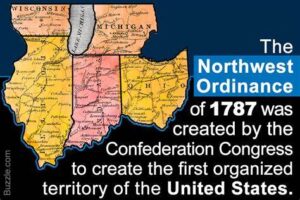 resided in a territory, they could draft a constitution and petition for full statehood. The ordinance provided for civil liberties and public education within the new territories, but did not allow slavery.”
resided in a territory, they could draft a constitution and petition for full statehood. The ordinance provided for civil liberties and public education within the new territories, but did not allow slavery.”
The last part angered the pro-slavery Southerners, but they were willing to go along with this because they hoped that the new states would be populated by white settlers from the South. They believed that although these Southerners would have no enslaved workers of their own, they would not join the growing abolition movement of the North. Of course, we all know how that played out.
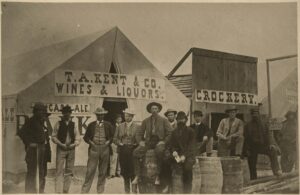 With the Westward migration in the United States, came the cowboys, and with them came the “Old West Saloons,” so that those cowboys wound have a place to wind down after a hard day’s work. We have all heard of the “Old West Cowboys” and while they were a picture of the west, it was the movies that brought them to life for most of us today. As the people moved west, many of the men came on their own at first. That brought the saloon keepers to see if they could make a buck on these men who were hungry for a little socialization. Saloons were common in almost all cities, and a few areas also had Mexican-style cantinas.
With the Westward migration in the United States, came the cowboys, and with them came the “Old West Saloons,” so that those cowboys wound have a place to wind down after a hard day’s work. We have all heard of the “Old West Cowboys” and while they were a picture of the west, it was the movies that brought them to life for most of us today. As the people moved west, many of the men came on their own at first. That brought the saloon keepers to see if they could make a buck on these men who were hungry for a little socialization. Saloons were common in almost all cities, and a few areas also had Mexican-style cantinas.
When we think of the “Old West Saloons,” we usually picture the same style. “A common wooden front with a wooden boardwalk. There were always a few hitching posts to tie a horse. Often a water source would be located close by for horses to drink. The front doors always consisted of two swinging doors that would brush up against a cowboy as he walked into the main bar area. The bar itself was very long to accommodate many standing customers. The floor area consisted of wooden tables and chairs.”
There were usually a group of men at the bar, and some at the tables playing a friendly game of poker…at least it was friendly until someone thought they were getting cheated. You put a few drinks in a guy, add to it the fact that he is losing the poker game, and it a recipe for a fight. That was how most of the violence in the towns got started…right there in the saloon and then, at times it moved out into the roadway.
We all think of the first saloons in the typical way of the movies, but that really wasn’t the case. “The first  saloons were mostly tents or square wooden structures with tent material thrown over the top. The material was enough to keep the rain off the heads of their customers. The floors were not made of wood. Tent saloons never had floors of any type. If it rained, the floors were muddy, and if it was dry, they were dusty. The only thing the early saloon offered was whiskey and a place to sit and rest.”
saloons were mostly tents or square wooden structures with tent material thrown over the top. The material was enough to keep the rain off the heads of their customers. The floors were not made of wood. Tent saloons never had floors of any type. If it rained, the floors were muddy, and if it was dry, they were dusty. The only thing the early saloon offered was whiskey and a place to sit and rest.”
The first whiskey ever served in a saloon was not the fine whiskey that we all think of. In fact, New Yorkers or those from Chicago would most likely cringe at the taste of the whiskey of the Old West. Whiskey in those days was “raw and made right in the camp or town. The simple ingredients included raw alcohol, sugar burnt, and a little pouch chewing tobacco. Whiskey with terrible names like ‘Coffin Varnish,’ ‘Tarantula Juice,’ ‘Red Eye,’ and others was common among the early saloons.” Later, when the trading with the Indians, the word “Firewater” was used to describe Whiskey. It got that name because they demonstrated its potency by pouring it over the fire. With a high enough proof, the Whiskey acted like gasoline on the fire. The name stuck, and Firewater it was!! Now, the Whisky of those days was not for the “lightweight” and was not to be sipped. The people of those days expected the patrons to drink it quickly. If they didn’t, they might find themselves “drinking a 5th of Whiskey at gunpoint.” Sipping was considered a weakness, and it was not tolerated!
Everyone thinks people of that era drank a lot of beer, but that was not common. Since pasteurization was not invented yet, the bear was warm, and if you didn’t drink it fast, it would get warmer and go flat. Whiskey kept its taste and potency no matter the temperature. “It was not until the 1880s that Adolphus Busch invented artificial refrigeration and pasteurization methods to the brewing process soon after Budweiser launched as a 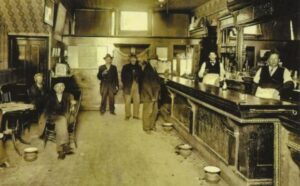 US national brand.”
US national brand.”
The first saloon was opened in the late 1820s in Bent’s Fort, Colorado. “A few little towns already had cantinas, but they did not compare to saloons that would soon spread like wildfire throughout the west. Striking gold was a big indicator that a saloon would pop up in that town. In 1848, Santa Barbara, California, only had one cantina. Yet after the discovery of gold, the town soon grew to 30 saloons. Towns like Livingston, Montana, with its 3,000 residents, had no less than 33 saloons. Back in those days, it was easy to open a business. Innovation and growth were on the incline. Saloons were profitable and with a large customer base.”

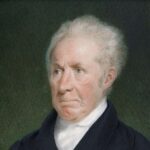 Every era has its trends. And the affluent sector of society is far more likely to go for the odd trends, to prove that they are high society, than the everyday guy. One such trend, that took place in the second half of the 18th century, was the wearing of the wig. It was considered a major status symbol. Nevertheless, by 1800, short, natural hair was all the rage again. That seems to be the problem with trends. Sometimes, they barely get started and suddenly they are over. The trend was toward the wearing of curly white wigs by gentlemen in the 18th century as part of their everyday look. Of course, many people will remember George Washington, with a nod of their head, but the reality is that George Washington never wore a wig. That was his real hair, with the addition of white powder. He, unlike many other men of that era, had a head full of red hair. He powdered it, because will he had plenty of hair to look like a wig, it was red. When Gilbert Stuart, the famous portraitist, painted the Founding Fathers, he depicted five of the first six Presidents with pure white hair. Unlike Washington, the next four Presidents, John Adams, Thomas Jefferson, James Madison and James Monroe did wear wigs, so his depiction of them was correct, and Washington wore his hair in that style, so he could look like he wore a wig without the expense of one.
Every era has its trends. And the affluent sector of society is far more likely to go for the odd trends, to prove that they are high society, than the everyday guy. One such trend, that took place in the second half of the 18th century, was the wearing of the wig. It was considered a major status symbol. Nevertheless, by 1800, short, natural hair was all the rage again. That seems to be the problem with trends. Sometimes, they barely get started and suddenly they are over. The trend was toward the wearing of curly white wigs by gentlemen in the 18th century as part of their everyday look. Of course, many people will remember George Washington, with a nod of their head, but the reality is that George Washington never wore a wig. That was his real hair, with the addition of white powder. He, unlike many other men of that era, had a head full of red hair. He powdered it, because will he had plenty of hair to look like a wig, it was red. When Gilbert Stuart, the famous portraitist, painted the Founding Fathers, he depicted five of the first six Presidents with pure white hair. Unlike Washington, the next four Presidents, John Adams, Thomas Jefferson, James Madison and James Monroe did wear wigs, so his depiction of them was correct, and Washington wore his hair in that style, so he could look like he wore a wig without the expense of one.
Trends weren’t the only reason for the wigs, however. In the 17th century, hairlines were an important aspect of fashion. It was thought that a “well-bred man” would have a good hairline. Unfortunately, in the pre-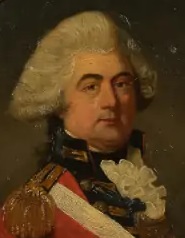 antibiotics world, syphilis was on the rise in Europe. It ultimately affected more Europeans than the Black Plague. Without antibiotics, people afflicted with syphilis suffered all the effects, including sores and patchy hair loss. That became a huge problem for men of status. Because of that, wigs were commonly used to cover up hair loss, and it wasn’t until two Kings started to lose their hair, that their use became widespread. King Louis XIV of France experienced hair loss at the early age of 17, and he hired 48 wigmakers to help combat his thinning locks. His English cousin, King Charles II, began wearing wigs a few years later, when his hair began to grey prematurely. Both conditions were indications of syphilis. A fashion was born, as courtiers started wearing wigs, and the trend trickled down to the merchant class. Of course, as we all know syphilis was not the only reason for balding, nevertheless, it could have been a bad thing to have people assuming.
antibiotics world, syphilis was on the rise in Europe. It ultimately affected more Europeans than the Black Plague. Without antibiotics, people afflicted with syphilis suffered all the effects, including sores and patchy hair loss. That became a huge problem for men of status. Because of that, wigs were commonly used to cover up hair loss, and it wasn’t until two Kings started to lose their hair, that their use became widespread. King Louis XIV of France experienced hair loss at the early age of 17, and he hired 48 wigmakers to help combat his thinning locks. His English cousin, King Charles II, began wearing wigs a few years later, when his hair began to grey prematurely. Both conditions were indications of syphilis. A fashion was born, as courtiers started wearing wigs, and the trend trickled down to the merchant class. Of course, as we all know syphilis was not the only reason for balding, nevertheless, it could have been a bad thing to have people assuming.
The wigs were called perukes. They were convenient because they were relatively easy to maintain, only needing to be sent to a wigmaker for a delousing. I’m sure that the powder, often flour, attracted every kind of bug imaginable. As wigs became more popular, they became a status symbol for people to “flaunt their wealth. An everyday wig cost 25 shillings, a week’s worth of wages for a common Londoner. The term ‘bigwig’ stems from this era, when British nobility would spend upwards of 800 shillings on wigs. In 1700, 800 shillings was approximately £40 (about $50 today) which when calculated for inflation, comes out to around £8,297 or $10,193 in today’s currency.”
Men weren’t the only ones to buy into the trend. Women, like Marie Antoinette were famous for their wigs. Military officers, especially in the British Army, also wore wigs. Some officers wore wigs, but only very specific military plait wigs, not the wigs that were bought and worn by those in high society. According to Revolutionary War Journal, “perukes were hot and heavy, extremely expensive, and constantly infected with bugs,” which was 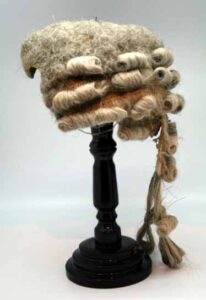
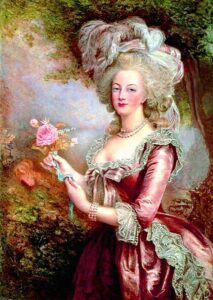 problematic for military use. In 1706, the military officers mostly used Campaign wigs, particularly the Ramillies wig, which was named after a British victory during the War of Spanish Succession. It was a short pigtail, or “queue” tied near the scalp and at the bottom of the plait. While these queues were originally fashioned from a soldier’s real hair, fake queues quickly became the norm. Nevertheless, the wigs were hot and uncomfortable, they were often bug infested, and by 1800, people were over it. That part hasn’t changed much over the years either. As anyone who wore a wig after Chemotherapy can tell you, at some point, most people just embrace the bald, and some men even shave their heads at the first sign of balding. Another was of embracing the bald.
problematic for military use. In 1706, the military officers mostly used Campaign wigs, particularly the Ramillies wig, which was named after a British victory during the War of Spanish Succession. It was a short pigtail, or “queue” tied near the scalp and at the bottom of the plait. While these queues were originally fashioned from a soldier’s real hair, fake queues quickly became the norm. Nevertheless, the wigs were hot and uncomfortable, they were often bug infested, and by 1800, people were over it. That part hasn’t changed much over the years either. As anyone who wore a wig after Chemotherapy can tell you, at some point, most people just embrace the bald, and some men even shave their heads at the first sign of balding. Another was of embracing the bald.

 My husband, Bob Schulenberg is a workaholic. Bob retired in 2016, but that doesn’t mean that he has really retired. Bob is a mechanic, and as my version of the old saying goes, “Old mechanics never retire, they just become exhausted.” That’s Bob to a tee, because he still works too hard, but he loves what he does, so it never seems like work to him…well, almost never. If a job is giving him fits…then, it seems like work!! Nevertheless, Bob’s garage is his “home, away from home” and the house is the “break room,” especially at 4:00pm when “Mike Hammer” comes on TV. He tries really hard not to have anything scheduled, anyone coming over, or any deadline on a job that would interfere with his Four O’clock Mike Hammer Break, complete with his popcorn and maybe a glass of ice-cold tea.
My husband, Bob Schulenberg is a workaholic. Bob retired in 2016, but that doesn’t mean that he has really retired. Bob is a mechanic, and as my version of the old saying goes, “Old mechanics never retire, they just become exhausted.” That’s Bob to a tee, because he still works too hard, but he loves what he does, so it never seems like work to him…well, almost never. If a job is giving him fits…then, it seems like work!! Nevertheless, Bob’s garage is his “home, away from home” and the house is the “break room,” especially at 4:00pm when “Mike Hammer” comes on TV. He tries really hard not to have anything scheduled, anyone coming over, or any deadline on a job that would interfere with his Four O’clock Mike Hammer Break, complete with his popcorn and maybe a glass of ice-cold tea.
Bob is the kind of person who is always there to help people out. Anytime someone calls with a need, he does 
 his level best to help them out. It’s not just mechanical work either. Bob has been a longtime caregiver, working right next to me on taking care of parents, siblings, aunts, and even me. Like me, Bob wasn’t a caregiver…until he was. When our parents needed help, Bob was there to help care for them. Mostly his job was muscle, but it was much needed muscle help. If a parent fell, I would call Bob. Even when he was at work, they let him come to the rescue. That help continues these days with my aunt, Sandy Pattan. He has taken us on drives and to family gatherings, and I know it has meant the world to Aunt Sandy, and to me. He is the kind of guy you can always count on. Even if he is in the middle of something, he makes time to help those who need his help!!
his level best to help them out. It’s not just mechanical work either. Bob has been a longtime caregiver, working right next to me on taking care of parents, siblings, aunts, and even me. Like me, Bob wasn’t a caregiver…until he was. When our parents needed help, Bob was there to help care for them. Mostly his job was muscle, but it was much needed muscle help. If a parent fell, I would call Bob. Even when he was at work, they let him come to the rescue. That help continues these days with my aunt, Sandy Pattan. He has taken us on drives and to family gatherings, and I know it has meant the world to Aunt Sandy, and to me. He is the kind of guy you can always count on. Even if he is in the middle of something, he makes time to help those who need his help!!
Bob really loves being retired. He often goes bowling on Tuesday mornings, with the other retired people who like to practice year-round. Personally, I like to take the summers off, but Bob is a bowling fanatic, as anyone who knows him can tell you. I figure that it never hurts to take a break from his retirement jobs and go do 
 something else he can get frustrated with, unless he’s having a good day and really watching his mark. Bob is a really good bowler, and if he’s having a bad day, it’s usually that he isn’t watching that dreaded mark, as any bowler can tell you. Bowling is as muck a head game as it is a skill game. If you don’t keep your head in the game, you will get frustrated. I say, as long as he enjoys the game, go for it…frustration and all. Today is Bob’s 70th birthday. Happy birthday Bob!! Have a great day!! We love you!!
something else he can get frustrated with, unless he’s having a good day and really watching his mark. Bob is a really good bowler, and if he’s having a bad day, it’s usually that he isn’t watching that dreaded mark, as any bowler can tell you. Bowling is as muck a head game as it is a skill game. If you don’t keep your head in the game, you will get frustrated. I say, as long as he enjoys the game, go for it…frustration and all. Today is Bob’s 70th birthday. Happy birthday Bob!! Have a great day!! We love you!!
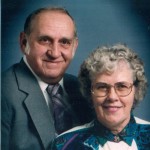
 My aunt, Jeanette Byer is an amazing woman. She refuses to let anything shut her down. She pretty much goes non-stop. You might think that’s not such a big deal, but my Aunt Jeanette is 88 years old…she just acts like she 60, or maybe she has convinced herself that she is. To make matters worse, Aunt Jeanette’s eyesight is failing, with Macular Degeneration. Many people would just sit down and quit in that situation, but Aunt Jeanette just keeps plugging along. Whatever it is, it works for her. Every day, she heads out to goes for a walk around her apartment complex…twice. If the weather is too cold, windy, or stormy, she just walks the halls of the building. I am so proud of how hard she works to stay independent. That isn’t an easy thing as we get older. Staying active and independent is a lot of work. You can’t take many days off, or you will never get back. Aunt Jeanette doesn’t take days off. She goes and goes. The words “give up” are just not in her vocabulary.
My aunt, Jeanette Byer is an amazing woman. She refuses to let anything shut her down. She pretty much goes non-stop. You might think that’s not such a big deal, but my Aunt Jeanette is 88 years old…she just acts like she 60, or maybe she has convinced herself that she is. To make matters worse, Aunt Jeanette’s eyesight is failing, with Macular Degeneration. Many people would just sit down and quit in that situation, but Aunt Jeanette just keeps plugging along. Whatever it is, it works for her. Every day, she heads out to goes for a walk around her apartment complex…twice. If the weather is too cold, windy, or stormy, she just walks the halls of the building. I am so proud of how hard she works to stay independent. That isn’t an easy thing as we get older. Staying active and independent is a lot of work. You can’t take many days off, or you will never get back. Aunt Jeanette doesn’t take days off. She goes and goes. The words “give up” are just not in her vocabulary.
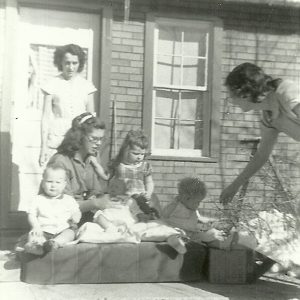
Aunt Jeanette is always a happy and smiling person. She is always trying to make sure that everyone has what they need to make them comfortable and happy too. Aunt Jeanette is a social person and enjoys social exchanges with other people in her building. She has been known to sit in a chair near the apartment complex entrance, and simply start up a conversation with the people in the building. Some people say, “Hello” and simply move on, but some will sit and visit with her. She like making new friends, and that is a perfect way to “get the ball rolling” on a new friendship. Sometimes it might take a few tries, but once people get past the initial surprise of having a random person start talking to them, they begin to feel comfortable with it and a new friendship is made. I’m sure lots of people might find this strange…at least until they realize that they now have a new friend. Too many people are so isolated in their own little world, that these social situations slip past them unnoticed, and later they wish they had not been such an isolationist.
Aunt Jeanette loves to go to the casinos. The flashing lights, clanging bells, and, the possibility of 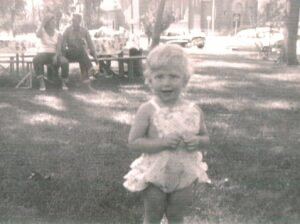
 that “big win” are a fun break from the everyday. Because she is a social person, the casino satisfies her need to be with people too. She isn’t a gambling addict. She just enjoys the occasional game of chance. There’s nothing wrong with that. It’s a nice outing for her and her daughter, Tina Grosvenor. They head out and make a day of it. I’m glad Tina takes her mom to have a little fun. Today is Aunt Jeanette’s 88th birthday. Happy birthday Aunt Jeanette!! Have a great day!! We love you!!
that “big win” are a fun break from the everyday. Because she is a social person, the casino satisfies her need to be with people too. She isn’t a gambling addict. She just enjoys the occasional game of chance. There’s nothing wrong with that. It’s a nice outing for her and her daughter, Tina Grosvenor. They head out and make a day of it. I’m glad Tina takes her mom to have a little fun. Today is Aunt Jeanette’s 88th birthday. Happy birthday Aunt Jeanette!! Have a great day!! We love you!!
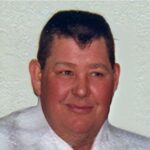
 My cousin, Elmer Johnson told me about his dad’s mischievous past a few years ago, and while he told me of a few stories, my imagination can run wild on the other things the boys must have tried too. Anytime you get three brothers, or in this case, the two oldest brothers, you have a recipe for…mischief. I don’t have brothers, but I do have four sisters, and I can tell you that we could think of some crazy stuff too. Well, not a crazy as my Uncle Elmar and his brother, Les. Those guys lived out in the country, and they had a lot of time on their hands…when their chores were done, anyway. I think that few things could compare to the time their dad went into the outhouse (common back then). That was when Uncle Elmer and his brother Les got an idea. Uncle Elmer drove the tractor right up by the outhouse. His brother Les hit the outhouse with a 2×4 as Uncle Elmer revved up the engine. Their dad came running out of the outhouse with his pants down around his ankles and the Montgomery Ward’s catalog in his hand. Their dad wasn’t very happy with them, but he was relieved that the outhouse made it through whole ordeal in good shape…and that he did too!! Every time I think about that story, I can’t help but laugh.
My cousin, Elmer Johnson told me about his dad’s mischievous past a few years ago, and while he told me of a few stories, my imagination can run wild on the other things the boys must have tried too. Anytime you get three brothers, or in this case, the two oldest brothers, you have a recipe for…mischief. I don’t have brothers, but I do have four sisters, and I can tell you that we could think of some crazy stuff too. Well, not a crazy as my Uncle Elmar and his brother, Les. Those guys lived out in the country, and they had a lot of time on their hands…when their chores were done, anyway. I think that few things could compare to the time their dad went into the outhouse (common back then). That was when Uncle Elmer and his brother Les got an idea. Uncle Elmer drove the tractor right up by the outhouse. His brother Les hit the outhouse with a 2×4 as Uncle Elmer revved up the engine. Their dad came running out of the outhouse with his pants down around his ankles and the Montgomery Ward’s catalog in his hand. Their dad wasn’t very happy with them, but he was relieved that the outhouse made it through whole ordeal in good shape…and that he did too!! Every time I think about that story, I can’t help but laugh.
Kids do crazy things, and they have no fear of reprisal…except that of their parents, obviously. So, the trick is to know how far you can go with your parents. Make sure they have a good sense of humor, and don’t mind admitting that they’ve been had. I have a feeling that their dad had pulled a few of the same, or similar pranks on his parents that Uncle Elmer and Les, and later Tom pulled on theirs. These days, kids play video games and watch television, but in those days, kids had to create their own games and adventures. Kids who lived on farms knew how to drive tractors, and probably pickup trucks, at an early age…way before city kids. Some, like my dad and his brother even knew how to use dynamite. And they got creative in their pranks, to say the least. It might seem strange to us, but I’ll bet those guys had the time of their lives.
Uncle Elmer was also an amazing cook. My cousin, Ellen Bremner, his oldest child told me about holiday meals at their house. Holidays were one of the times the kids cherished the most. Their dad, my Uncle Elmer, making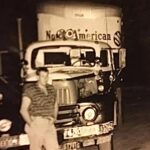
 a wonderful holiday meal from scratch, with everyone in the family standing there watching and smelling that wonderful meal…their mouths watering and stomachs growling. Dinner couldn’t come soon enough. Uncle Elmer liked to experiment with his cooking, something that their mom, my Aunt Dee, really didn’t do. It’s hard for me to imagine Uncle Elmer as a chef, but I think I wish I could have tasted that food. Today would have been Uncle Elmer’s 91st birthday. Happy birthday in Heaven, Uncle Elmer. We love and miss you very much.
a wonderful holiday meal from scratch, with everyone in the family standing there watching and smelling that wonderful meal…their mouths watering and stomachs growling. Dinner couldn’t come soon enough. Uncle Elmer liked to experiment with his cooking, something that their mom, my Aunt Dee, really didn’t do. It’s hard for me to imagine Uncle Elmer as a chef, but I think I wish I could have tasted that food. Today would have been Uncle Elmer’s 91st birthday. Happy birthday in Heaven, Uncle Elmer. We love and miss you very much.


 My brother-in-law, Chris Hadlock has been having a very busy summer this year, and it doesn’t look like it will slow down anytime soon either. For Chris, that is ok, because he loves living on the property where he grew up, and working on it is truly a “labor of love” for him. Chris and my sister, Allyn Hadlock bought the place after his parents had passed away, and they have been fixing it up ever since. I know his parents would be so pleased with how amazing it looks. They loved that place, and to have their son and his wife living on it and sharing it with the family, keeping the dream in the family would mean the world to them.
My brother-in-law, Chris Hadlock has been having a very busy summer this year, and it doesn’t look like it will slow down anytime soon either. For Chris, that is ok, because he loves living on the property where he grew up, and working on it is truly a “labor of love” for him. Chris and my sister, Allyn Hadlock bought the place after his parents had passed away, and they have been fixing it up ever since. I know his parents would be so pleased with how amazing it looks. They loved that place, and to have their son and his wife living on it and sharing it with the family, keeping the dream in the family would mean the world to them.
Over the years, the house and garage fell into disrepair, and so they removed the doublewide mobile home and built a beautiful two-story house in its place. Now it is time for the garage. Chris, with the help of brothers-in-law, Mike Reed and Mike Stevens, as well as their son, Ryan Hadlock and Ryan’s son, Ethan Hadlock are in the process of building a new garage…his dream garage!! The old one had to be torn down, because it was in “less than great shape!!” First, they built a retaining wall, which has been a big job, in and of itself. Ethan helped a lot with that process!! He became quite adept at driving the tractor.
Withe the arrival of Independence Day, and the week before, Ryan; his wife, Chelsea; and their kids, Ethan and Aurora went camping at Chris and Allyn’s mountain property. Chris decided to take some time off near the 4th of July, so they could join the family on the mountain for the weekend. Daughter; Lindsay Moore; her husband, Shannon; and daughter, Mackenzie joined the family on the mountain too. Then, the family were joined by 

 daughter, Kellie Hadlock; her partner, Tim Thompson; as well as the rest of the family for the fireworks display at the Event Center, and again for dinner on Friday night. Daughter, Jessi Sawdon; her husband, Jason; and daughter, Adelaide were in Michigan with Jason’s family this year, so they couldn’t join the family, and they were greatly missed.
daughter, Kellie Hadlock; her partner, Tim Thompson; as well as the rest of the family for the fireworks display at the Event Center, and again for dinner on Friday night. Daughter, Jessi Sawdon; her husband, Jason; and daughter, Adelaide were in Michigan with Jason’s family this year, so they couldn’t join the family, and they were greatly missed.
Somewhere in between all the activity, the men found time to cut down a couple of dead trees in the back yard! Now, that comment coming from Allyn, caused quite a stir when their daughter, Lindsay commented, “Ummmm!! Kellie and I also ran a chain saw and a cutter, Mom!! The ladies were valuable contributors!!” And a quick recovery from Allyn, “Oh yes!! Thanks for chiming in Lindsay!! We did help also with all the clean-up of the trees!!” We really can’t leave the ladies out of this. The property by the river may be owned by Chris and Allyn, but it is an always will be a “Hadlock Family Project!!” Oh, and the building materials for the garage were delivered last week!! Chris was so excited!!
Lindsay also pointed out a “not often-seen side” of Chris…the “Grandpa Side.” Lindsay tells me, “Grandpa is very tender towards his grandkids. He loves them and wants to take care of them!! I’ve enjoyed watching his relationship with Mackenzie grow. He likes to spend time with her and show her an adventure!! And really for all of us, he’s a really good Dad! He loves us dearly and it shows!! He is always there for us. He is always up for a travel adventure…camping, going to games, beach trips, you name it!! He loves an adventure with his family!!” With Lindsay’s husband, Shannon being a coach for the Wyoming Cowboys, Chris and Allyn have been 

 going to games as much as they can. One game was the Wyoming-Air Force game, where they had field passes!! They had a great time!! Today is Chris’ birthday. Happy birthday Chris!! Have a great day!! We love you!!
going to games as much as they can. One game was the Wyoming-Air Force game, where they had field passes!! They had a great time!! Today is Chris’ birthday. Happy birthday Chris!! Have a great day!! We love you!!

